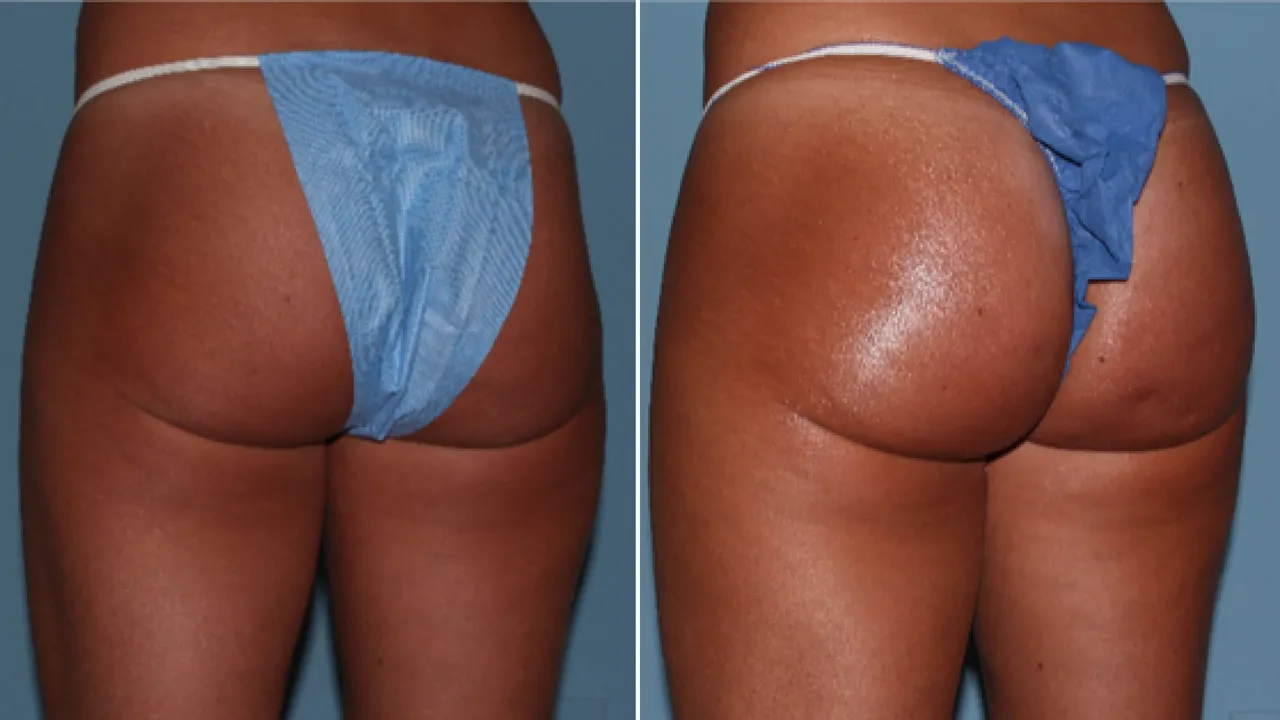
The pursuit of enhanced buttock volume and contour has led to a dramatic increase in the demand for non-surgical augmentation methods, chief among them the use of various dermal fillers. While often promoted as a safer, less invasive alternative to surgical fat transfer (Brazilian Butt Lift, or BBL), these filler treatments carry a unique and significant spectrum of risks that patients must thoroughly comprehend. The sheer volume of product required to achieve a noticeable change in a large area like the buttocks elevates the potential for complications far beyond those seen in typical facial filler procedures. The hazards range from common, transient side effects like bruising and swelling, to severe and potentially permanent issues such as infection, nodule formation, granulomas, and—most critically—vascular occlusion with subsequent tissue necrosis. Navigating this landscape requires not only choosing an experienced, board-certified practitioner but also a clear, sober understanding of the physiological challenges inherent in injecting large volumes of synthetic material deep into the expansive and highly vascularized gluteal region.
The Unique Challenge of Large-Volume Augmentation
The sheer volume of product required to achieve a noticeable change in a large area like the buttocks elevates the potential for complications far beyond those seen in typical facial filler procedures.
The fundamental difference between buttock filler and facial filler treatments lies in the scale of volume required. Where a typical facial procedure might use a few milliliters, buttock augmentation often demands tens, even hundreds, of milliliters of product to achieve the desired projection and shape. This high volume inherently increases several risk factors. Firstly, the cumulative risk of infection rises because a larger area is exposed to needle sticks, increasing the total surface area through which bacteria can be introduced. Secondly, the probability of uneven distribution and subsequent palpable lumpiness or asymmetry escalates with the volume. The body’s inflammatory response to a large bolus of foreign material is more intense and less predictable than its response to a small, localized injection, making the formation of chronic inflammatory reactions, such as granulomas, a much greater long-term concern in the gluteal region.
Vascular Occlusion: A Critical, Though Rare, Danger
The hazards range from common, transient side effects like bruising and swelling, to severe and potentially permanent issues such as infection, nodule formation, granulomas, and—most critically—vascular occlusion with subsequent tissue necrosis.
While less common than in the face, vascular occlusion remains the most critical and potentially devastating risk associated with any filler treatment, including those in the buttocks. This occurs when the filler material is inadvertently injected directly into a blood vessel or when the sheer volume of product compresses a nearby vessel, blocking blood flow. In the gluteal area, the proximity to major blood supplies, particularly the superior and inferior gluteal arteries, means that an occlusion can lead to rapid tissue necrosis (death) in the affected area, manifesting as severe pain, mottling of the skin, and eventual breakdown of the tissue. If the filler, particularly hyaluronic acid (HA), enters the systemic circulation, it carries a small but finite risk of migration to distant sites. The management of an HA-related occlusion involves the immediate injection of hyaluronidase, but the window for successful intervention is extremely narrow, underscoring the necessity of intimate anatomical knowledge on the part of the injector.
Delayed Inflammatory Reactions: Nodules and Granulomas
The formation of chronic inflammatory reactions, such as granulomas, a much greater long-term concern in the gluteal region.
One of the persistent long-term side effects that plague large-volume filler procedures is the development of nodules and granulomas. Nodules are palpable lumps that can occur in the weeks or months following the injection, often due to poor technique, inadequate product diffusion, or the natural clumping of the material. Granulomas, however, are a more serious and chronic form of inflammatory response. They are hard, firm, non-tender masses that can develop months or even years after the procedure, representing the body’s overzealous attempt to wall off the foreign filler material. These chronic inflammatory masses are difficult to treat, often requiring steroid injections, oral medications, or even surgical excision. Their unpredictable, delayed onset makes them a distinct risk that patients must acknowledge, as they can permanently alter the contour and texture of the buttocks.
Migration and Displacement: Altering the Intended Contour
The movement or displacement of the injected material from its intended location, particularly over time, which can visually distort the initial contour.
The gluteal region is a dynamic area subject to constant movement, pressure from sitting, and muscle contraction. This continuous mechanical stress significantly increases the risk of filler migration or displacement. This is the movement or displacement of the injected material from its intended location, particularly over time, which can visually distort the initial contour. For instance, filler intended to provide upper gluteal projection might gradually move to the lower, more dependent areas of the buttock, or even into the posterior thigh, creating an unnatural or lumpy appearance that detracts from the desired shape. This risk is amplified when non-FDA-approved or permanent fillers are used, as these materials may integrate poorly with native tissue and are more susceptible to gravitational forces and chronic pressure, leading to a permanent, undesirable change in silhouette.
Infection Risk: From Cellulitis to Abscess
The cumulative risk of infection rises because a larger area is exposed to needle sticks, increasing the total surface area through which bacteria can be introduced.
Any procedure that breaches the skin barrier carries an inherent risk of infection, but buttock filler treatments, given the volume and deep penetration required, demand heightened vigilance. A localized infection may present as cellulitis, a warm, painful, and spreading area of redness that requires immediate antibiotic therapy. More severe infections can lead to the formation of a deep abscess—a pocket of pus beneath the skin—which often necessitates surgical drainage and removal of the infected filler material. Introducing foreign material into the deep tissue provides an excellent environment for bacterial colonization, and if the infection involves a non-HA filler, the material itself may become chronically contaminated, making clearance extremely difficult and potentially requiring the complete surgical excision of the affected tissue.
Systemic Side Effects of Non-HA Fillers
The use of non-hyaluronic acid fillers, such as silicone or liquid polymers, carries distinct and often irreversible systemic risks.
While Hyaluronic Acid (HA) fillers are currently the most common and safest temporary option due to their reversibility with hyaluronidase, the use of non-HA fillers, such as non-medical-grade silicone, Poly-L-Lactic Acid (PLLA), or liquid polymers, carries distinct and often irreversible systemic risks. Liquid silicone, in particular, is associated with notorious and severe complications, including pulmonary embolism (if injected into a vein, the material can travel to the lungs), systemic inflammatory response, and chronic debilitating disfigurement. The body’s inability to break down these permanent or semi-permanent materials means that if a complication occurs—such as a large, chronic granuloma or migration—surgical removal is often the only recourse, which is itself a difficult procedure that rarely achieves a complete cure. The long-term safety profile of many off-label fillers in this context is poorly understood, making their use exceptionally hazardous.
Pain and Discomfort: Managing Acute and Chronic Issues
Pain and discomfort are universally experienced immediately after the injection due to the large volume of fluid injected and the subsequent inflammatory response.
Pain and discomfort are universally experienced immediately after the injection due to the large volume of fluid injected and the subsequent inflammatory response. This acute pain is typically managed with over-the-counter or prescription analgesics and subsides within the first few days. However, a less common but more concerning risk is the development of chronic pain. This can be due to nerve entrapment, persistent deep inflammation from unresolved nodules or granulomas, or a chronic inflammatory reaction to the filler itself. Chronic gluteal pain can significantly interfere with sitting, exercise, and daily activities, a long-term burden that patients may not anticipate when focusing solely on the cosmetic benefit. Any pain that persists beyond the initial recovery period warrants immediate and thorough investigation by the treating clinician.
Asymmetry and Unnatural Contour: An Aesthetic Risk
The aesthetic risk of an unsatisfactory result, including asymmetry, overcorrection, or an unnatural, shelf-like contour.
Beyond the immediate medical dangers, there is the aesthetic risk of an unsatisfactory result, including asymmetry, overcorrection, or an unnatural, shelf-like contour. Achieving symmetry is inherently difficult when injecting a free-flowing material into two distinct, dynamic sides of the body. Differences in native muscle tone, fat distribution, and the placement of the filler can easily lead to one buttock appearing larger, higher, or lumpier than the other. Furthermore, patients may request a volume that, while anatomically possible to inject, looks visually disproportionate or unnatural when viewed in the context of their entire physique. Correcting an aesthetically poor result, particularly if large volumes of non-HA filler were used, can be more challenging and costly than the original procedure, underscoring the crucial need for conservative initial treatment and clear communication regarding realistic aesthetic boundaries.
Psychological Impact of Complications
The unexpected appearance of persistent complications can lead to significant psychological distress, anxiety, and body dysmorphia.
The pursuit of cosmetic enhancement is intrinsically linked to self-image and confidence. Consequently, the unexpected appearance of persistent complications—such as severe, visible lumps, chronic pain, or long-term disfigurement from necrosis—can lead to significant psychological distress, anxiety, and body dysmorphia. Patients who initially sought the procedure to enhance their self-esteem may find themselves grappling with a new, debilitating physical and emotional burden. Managing these complications often requires not only medical and surgical intervention but also psychological support to address the trauma, fear, and frustration associated with a failed or complication-ridden aesthetic procedure. The emotional cost of an adverse outcome is a fundamental part of the risk profile.
The Necessity of Specialized Clinical Environment
These procedures demand a specialized clinical environment and a practitioner with explicit expertise in large-volume contouring and emergency protocols.
Due to the heightened risks associated with buttock filler injections, these procedures demand a specialized clinical environment and a practitioner with explicit expertise in large-volume contouring and emergency protocols. The procedure should never be performed in non-medical settings (such as private homes or salons) or by non-medical personnel. The environment must be sterile to minimize infection risk, and it must be fully equipped with the necessary emergency medications, including hyaluronidase, epinephrine, and resuscitation equipment, to manage a potential vascular occlusion or anaphylactic shock. The training of the injector should extend beyond simple facial filler techniques to include deep gluteal anatomy, risk zones, and advanced injection techniques designed to avoid major vessels and ensure slow, careful product diffusion into the subcutaneous plane, reinforcing that the safety of this procedure rests almost entirely on the qualifications of the person holding the needle.
